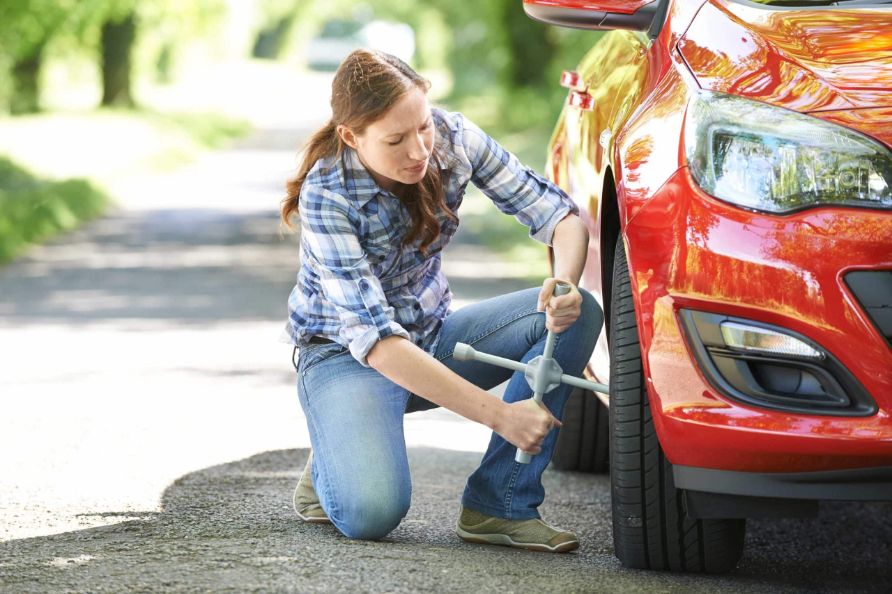
All motorists around the world have experienced a flat tyre at some point. It can be a natural part of wear and tear of a vehicle, or it can happen when you’ve driven over a sharp object tough enough to puncture a tyre. Whatever the reason, don’t panic. We’ve got you covered with our easy steps to follow.
Drive to a safe area
Once you realise the need to change your tyre, drive to a safe area, far enough away from passing traffic. The site must be on a level surface and firm enough to support the jack.
Secure the vehicle
Make sure your handbrake is up for manual cars and in first gear, or in park for automatic transmissions. Then turn your hazard lights and brake lights on to alert other motorists that they need to beware when going past your area. Remove the keys from the ignition and make sure all passengers have exited the vehicle before you begin changing the tyre. If you can, secure an object like a piece of wood or brick in front of and behind the tyre on the opposite side of the car.
Grab your tools
The tools can vary depending on the car, however the tools most commonly required are:
- Spare tyre
- Wheel brace
- Jack
- Owner’s manual
TIP: Never change a tyre with your back to the traffic.
Place the jack
Check the owner’s manual for the right ‘jacking points’ – these are the areas of the car that are strong enough to hold up the vehicle. Once the jack is in place, slowly turn the handle clockwise until you remove some, but not all, of the car’s weight from the flat tyre. Turn the handle until the flat tyre is approximately 5cm off the ground. When the vehicle is jacked up, put the spare wheel under the car for additional support and swap it with the damaged wheel when adding the spare.
TIP: Never get underneath a jacked-up car
Remove wheel nuts, wheel and hubcap
Put the wheel brace onto the wheel nuts and (with a straight arm and straight back) apply force to the nut in an anticlockwise direction, in order to loosen the nuts. Do this to all of the wheel nuts. Once these are loose, attach the wheel brace so the lever arm is horizontal and use your body weight. Completely remove the nuts and take the wheel off. Remove the hubcap of the wheel.
Fit the spare tyre
Line up the bolt holes of the spare wheel with the wheel studs or holes on the car and fit the tyre on. Tighten all the wheel nuts by hand, starting with the bottom nut. It is safest to fully tighten them once the car has been un-jacked and is on the ground again. Once the nuts are as tight as they can go by hand, remove the flat tyre from underneath the car.
Lower the jack and tighten wheel nuts
Keep a straight arm and back while you turn the handle on the jack to lower it until the new tyre takes the weight of the vehicle. Once the car is fully on the ground, remove the jack from under the car. Tighten the wheel nuts fully with the wheel brace and replace the hubcap.
Replace tools and check tyre pressure
Place all your tools where you found them, and place the flat tyre where the spare wheel usually goes. If you have a tyre pressure gauge, use this to check the pressure of your tyre to make sure it is fully inflated. You can always drive carefully to a petrol station and use theirs, as well as to pump up the tyre to the recommended pressure.
And that’s all it is. If you’re ever stuck and unsure of changing your tyre, you can always call United Tilt Tray Service on 08 9204 4141 or visit our website for more information. For emergency roadside assistance we respond within 15 – 30 minutes. Otherwise we endeavour to be there within the hour.
